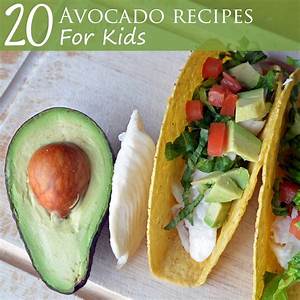Importance of well balance diet
All food contains all of the nutrients we need to be healthy, it is necessary to eat various foods in sufficient amounts. A good diet will include many different foods, and sufficient in quantity and quality to meet an individual’s need for food energy and other micro nutrients.
JUICES
Typical serving size:
½ cup (4 oz or 118 mL)HOW THEY HARM
Weight gain High blood pressure Delayed development (in infants)WHAT THEY HEAL
Lack of nutrients High cholesterol Hypoglycemia Most guidelines call for 5 to 10 servings of fruits and vegetables each day—more than what most North Americans now consumeOne of the easiest ways to get more servings of fruits and vegetables is by drinking juice
About 4 oz (118 mL) of juice is equal to one serving of fruit or vegetable
Health Benefits
Delivers necessary nutrients quicklyFruit and vegetable juices provide fluids—keeping your body hydrated—as well as most of the nutrients in the fruits and vegetables they were made from
Helps reduce high cholesterol
Drink two glasses of orange juice every morning, but make sure it’s a brand spiked with the same kind of cholesterol-lowering plant sterols found in margarine spreads like Benecol
Researchers found that those who drank sterol-fortified juice lowered bad cholesterol levels by 7%
Levels blood glucose
For those who suffer from bouts of hypoglycemia, a small glass of fruit juices may be a good way to stabilize blood glucose levels
Health Risks
Weight gainDespite the nutrition in every glass, the calories from the natural fruit sugar and added sugar can add up quickly and lead to weight gain
Blood pressure
Although vegetable juices tend to have less sugar than fruit juices, canned or bottled vegetable juice often has a higher salt content, which can affect blood pressure
Check labels carefully, and select a low-sodium or no-salt-added juice
Health of infants
Fruit juice should not be given to infants under 6 months, according to a report from the American Academy of Pediatrics
Drinking lots of juice can lead to diarrhea, poor weight gain or delayed development (because it doesn’t have the nutrients that breast milk or formula have), and tooth decay
Older children should be encouraged to eat whole fruits, which have more fiber, instead of juices
Allergies
Buying Tip
s
” These drinks are not generally nutritionally equivalent to fruit juice
They tend to be higher in sugar (usually corn syrup) and other additives with less actual fruit juice
Storing Tips
Special Feature TRAVEL: Eating Healthy on the Road While travel is good for the soul, it may be difficult to resist fast food or find fresh food at the airport or rest stops
Follow these tips to maintain your healthy eating habits on the go: AT THE AIRPORT Once you get through airport security, there is no going back, which means you are essentially trapped in a fast food prison
But luckily, there are healthy choices at many airports
Here’s what you can do: Go high end
Recently, airports have added higher-end restaurants, which tend to offer more salads and sandwiches light on the dressing and sauce
Or check out the pizza places—but stick to a thin-crust vegetarian slice
Many pizza joints also offer some simple salads or soups that are healthier options
Check the websites of airport restaurants so you know what food choices are available
Skip beer
Don’t be lured into grabbing a pint at the airport bar while you wait
Not only does alcohol add calories, but it’s also dehydrating
Be a kid again
At chain restaurants, you can trim calories and feel lighter for your travels by ordering from the children’s menus
ON THE PLANE Planning ahead is key to avoiding jet lag and being hungry
Preview airline menus
Some airlines have picked up on the healthy trend and are offering better alternatives, from snack boxes with pita chips to meals of turkey sandwiches
You can find meal options on airlines websites
Some airlines also provide special diet meals if you can request them when you book your flight
Carry on more than luggage
If nothing is appealing or healthy, then plan on bringing some healthier options
Some good portable choices include yogurt cups with fruit and granola, wedge salads, and chicken wraps
Chug lots of water
Stay hydrated with bottled water
Avoid alcohol and anything caffeinated during your flight
Both can dehydrate your body, mess up your internal clock, and exaggerate jet lag symptoms
ON ROAD TRIPS If you are driving to your destination, you may have no choice but to hit a fast-food restaurant at a rest stop
To sort out your best options, see the Fast Food feature
Of course, the smartest thing you could do is pack your own food in the car
Here are some great healthy portable options for your road trip: Chew tropical dried fruit
The sweetness and chewiness satisfy you
Pack some soy nuts and wasabi peas
Dried soy nuts are an excellent alternative to other high- calorie nuts, without giving up that satisfying crunch
Craving something sweet, salty and spicy? Reach for a package of wasabi peas for surprising flavor on the go
Pack a couple of frozen bottles of water
It will keep any food chilled for a couple of hours, then provide a cold, calorie-free drink
Shop smart at the mini-mart
If provisions run low, look for fresh fruit, low-fat yogurt, whole grain cereal, or string cheese at a gas station mini-mart
IN FOREIGN COUNTRIES Trying new foods should be part of any trip, especially if you’re exploring new parts of the world
Here’s how to taste a little adventure but not upset your stomach: Opt for hot
The Centers for Disease Control and Prevention estimates there are 50,000 cases of traveler’s diarrhea each day
When food is cooked—ideally right in front of you—you will know if it’s hot enough to kill some of the illness-causing bacteria
Choose foods that are freshly cooked and served at very hot temperatures—just don’t burn your tongue
Sip from bottles
Avoid nonpotable water, which hasn’t been purified to drinking water standards
Also avoid ice cubes made from this water
Instead, go for beverages in bottles
Overcome language barriers
You don’t need a dictionary-size vocabulary to order healthier food in foreign countries
But you should learn a few key words of the language so that if you’re pressed, you can order for yourself
For example, if you can express the words chicken and grilled, you should be served something you can eat
And if you have to, eyeball what other people in a restaurant are eating, and point
THE BOTTOM LINE
Stay hydrated by drinking lots of water and avoiding alcohol and caffeine




